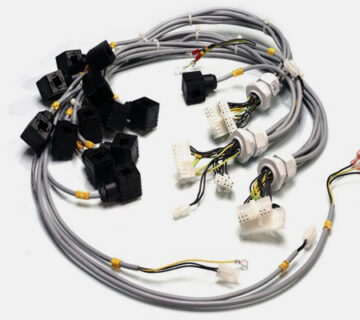Audio cables bring about a major impact on the quality of sound of a system, which is very important while live streaming or recording a live event production. An audio cable always has the potential to add noise and distortion, which means that it is very necessary to use the right cable. And, this is where we need to understand the difference between balanced and unbalanced cables. Understanding which cables to use and when to use them requires good knowledge; so here’s giving you the right information about the same.
What is a balanced cable?
A balanced cable consists of three wires within a plastic casing – two signal wires and a ground wire. The signal wires pass identical audio signals through each wire, while the surrounding ground wire shields the signal wires from external electronic interference from devices like lights, radios, televisions, and transformers. Such a cable takes the audio signal from a piece of instrument or audio system you are using to a receiver device, with both the equipment ends having a converter in them that lets them make use of both signal wires. Both the signals are identical, but one of them is the inverted mirror opposite of the original. The equipment sending two signals puts them out of phase, but when the signals arrive at the receiving equipment, it puts both the signals back in phase, taking the mirrored signal to revert it to its original form. When, in this way, both the signals match, the signals get passed to the mixer. Any distortion will be out of phase here, and will cancel itself out.
What is an unbalanced cable?
An unbalanced cable consists of two wires within a plastic casing – a signal wire and a ground wire – the signal wire in the center passing the audio signal through, and the surrounding ground wire shielding the signal wire from external electronic interference. While taking the audio signal from a piece of instrument or audio system to a receiver device, such a cable passes it straight through without manipulation; thus resulting is distorted audio.
Which cable should you use?
Balanced cables have better signal-to-noise ratio, zero distortion, and much lower impedance, as compared to unbalanced cables. All in all, balanced cables are a great improvement over unbalanced cables. In addition, unbalanced distortions won’t perform over longer lengths. As they are known to cause distortion, longer cable lengths will act like antennas to pick up any surrounding noise or hum. Thus, unbalanced cables are not the right choice for lengths beyond 20 feet. In this case, you will have to use balanced cables as they don’t get any distortions, no matter how long the cable may be. In spite of this, for lengths below 10 feet, unbalanced cables are advisable as they have stronger signals than balanced cables. Also, one of the biggest advantages of using an unbalanced cable is the cost. Unbalanced cables are generally 30-60% cheaper than their balanced counterparts. In addition to this, balanced cables will require pairing up with balanced mixed equipment, thus adding even more to the cost. Thus, unbalanced cables can prove to be a cheaper option.
After knowing all the details, it is up to you to decide as to whether you wish to use a balanced or unbalanced cable with your audio system. As you can see that both kinds of cables have their own pros and cons, the final decision should be yours after understanding what your application requires. As a general rule, you could use an unbalanced cable for shorter lengths; or you could use unbalanced cables even over longer distances on a loud device like a guitar, where the loud noise of the device with make any extra picked-up noise unnoticeable. But again, the final decision is only up to you. And, if you can’t decide, you can always get in touch with Miracle Electronics, one of the most respectable and reliable wire harness manufacturers in India, where you can get the best of all – consultation, advice, products, and services.




